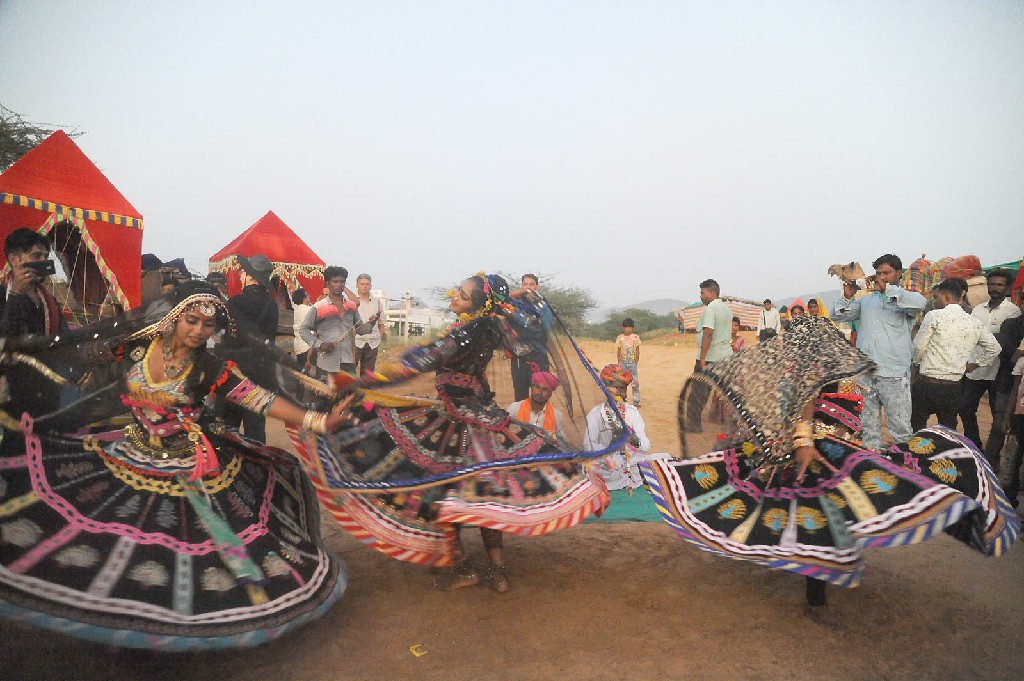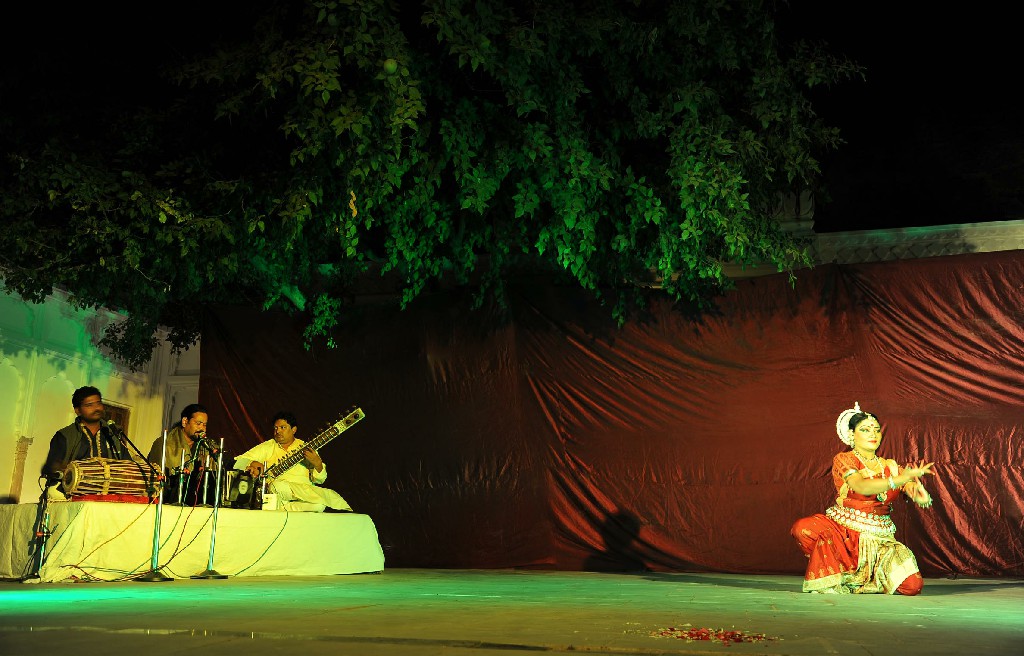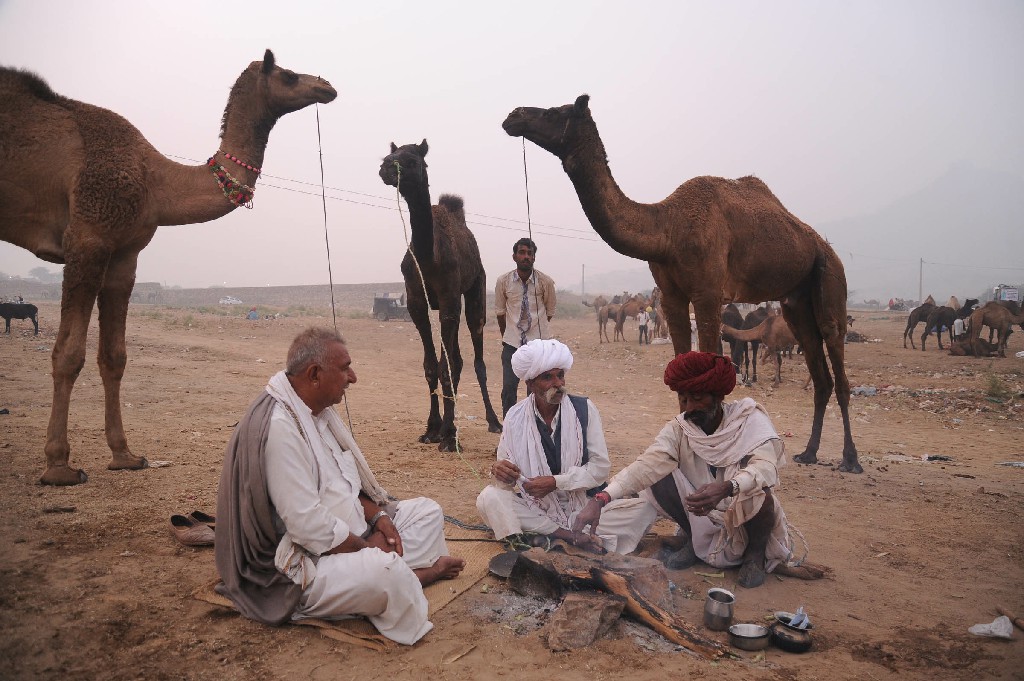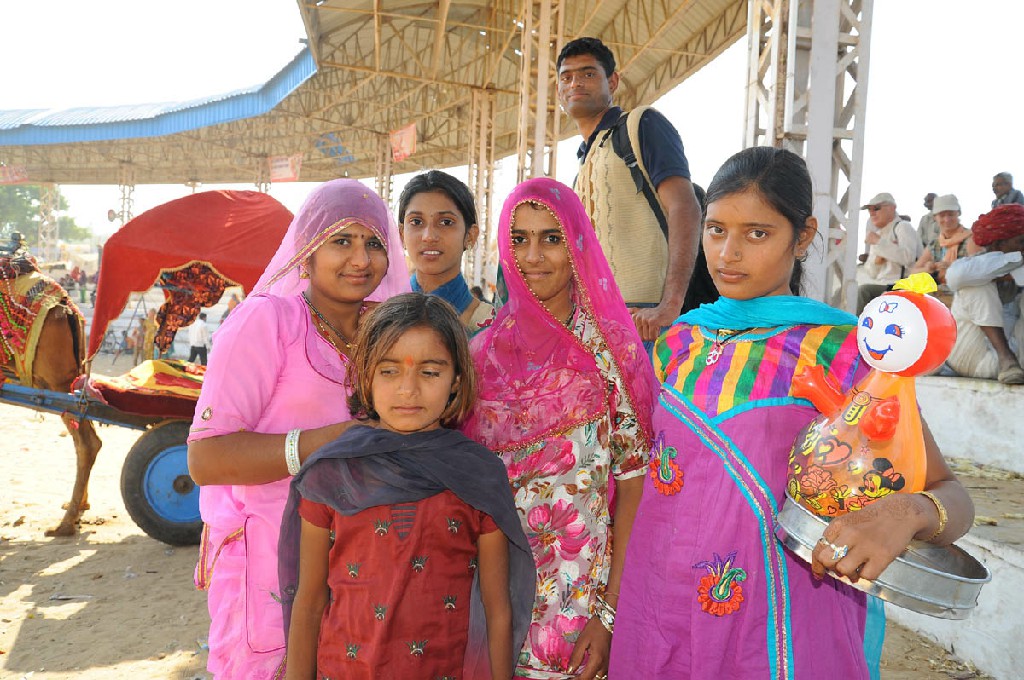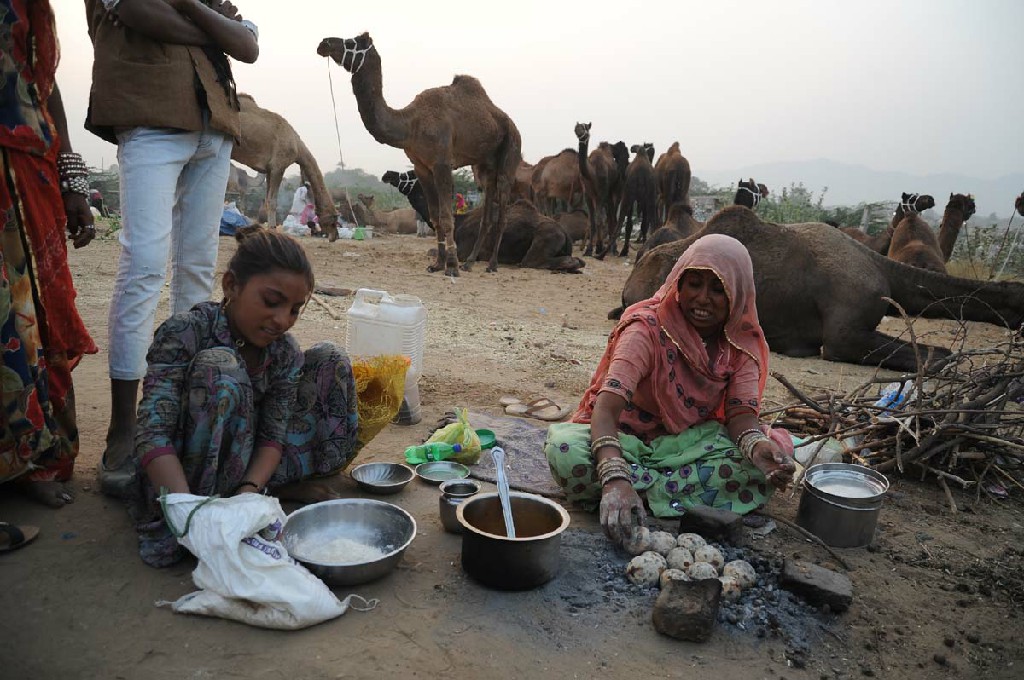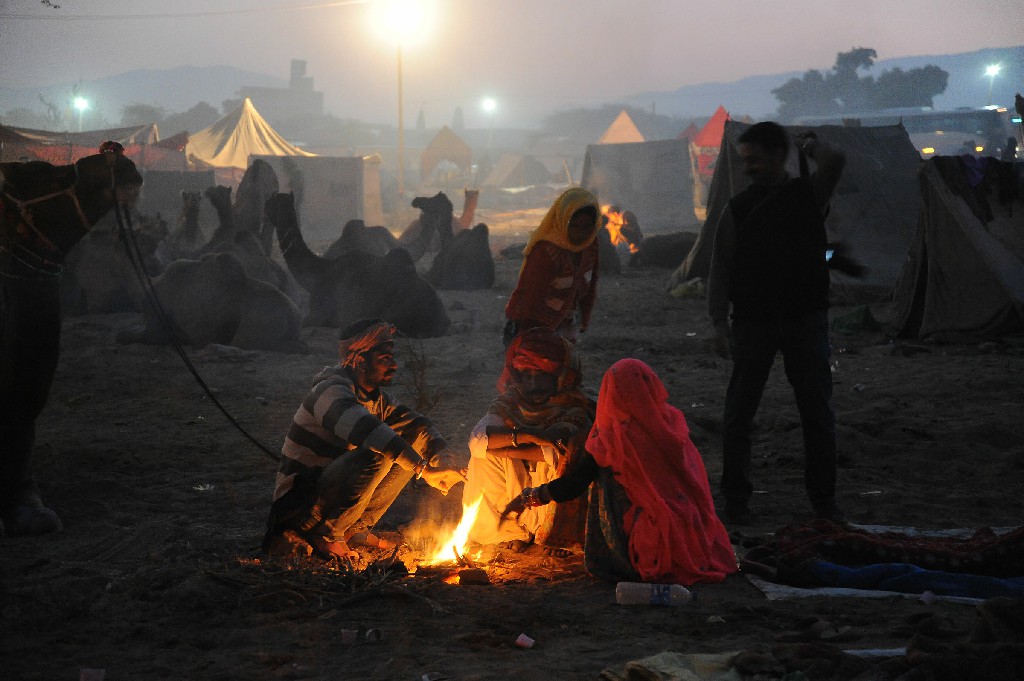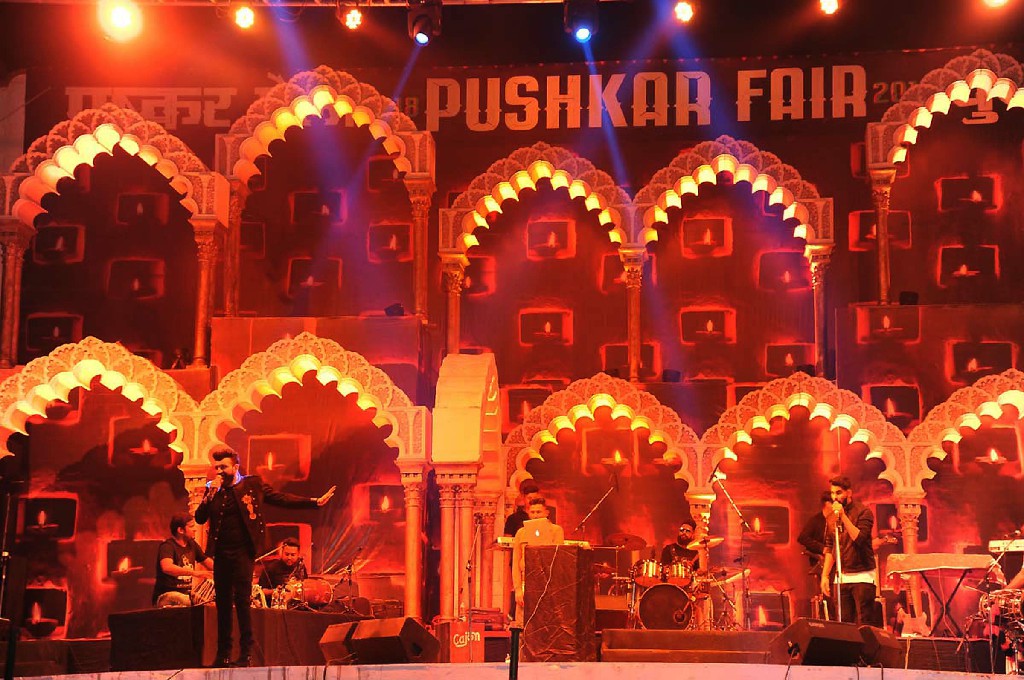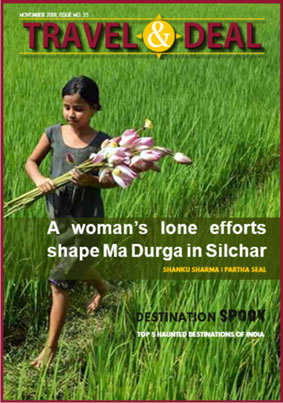Md. Masarrath Ali Khan
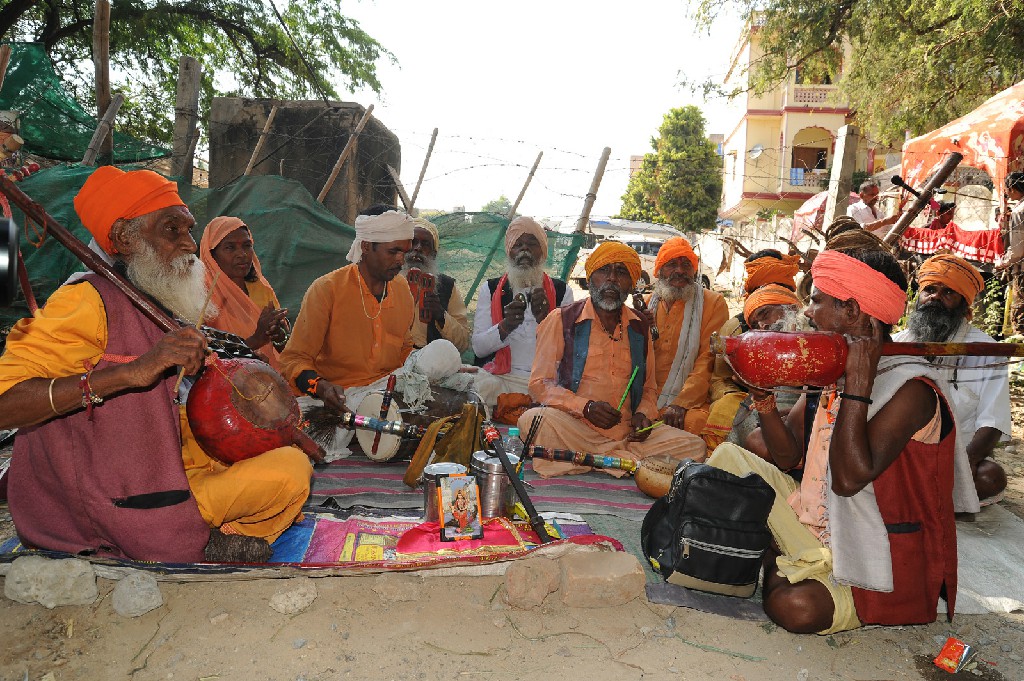
Those are the early hours of a breezy morning and there is a thick fog all around. Armed with cameras, many tourists are silently marching towards the camel grounds. The caravans of camels have majestically ambled their way through the golden sands and converged at the sand dunes. Their owners – dressed in soiled white attire, capped by bright colorful turbans and sporting big moustache – squat in circles sharing stories and warming over small orange bonfires, while the moon and the stars create a canopy of heavenly illumination above them.
As the morning sun of Prabodhini Ekadashi dusts the sands with gold and thin layers of mist peel away, the landscape undergoes a time warp. Some traders light up a small fire in sand and make tea from camel’s milk in brass vessels, while their womenfolk take the camels to the water tank. The camel-pulled carts surmounted with red, pink and green canopies start moving in a file to the town to fetch tourists for the day.
Far away, two hot air balloons rise in the air, drift over and disappear from sight. The aroma of fresh roses, the fragrance of incense sticks and the mellifluous sounds of temple bells – all seem to weave magic. You are transported into a different world.
This is Pushkar Camel Fair that draws huge crowds of tourists from all parts of the world. It has a magnetism of its own that defies description. It is like travelling back a hundred years in time. Though camels are an integral part of the celebrations, the fair is more about the joys of self discovery, rejuvenation and revelling in the small pleasures of life. You get to see innocent beautiful and radiant smiling faces, all diffused in a romantic burst of colours. Brightly turbaned men with impressive moustaches and womenfolk in vibrantly coloured lehengas and odhnis lend a majestic air to the fair. Village girls in intricately embroidered, swirling skirts, can be seen pulling the ghunghat (veil) spontaneously over their faces at the first sight of a stranger!
The fair is a rich blend of trading, commercial activities, social gatherings, fun and frolic, music, songs, folk dances, play and amusement, cultural performances, religious rituals and pilgrimage to the temples, all distinct yet thinly overlapping over each other in perfect symphony!
It all starts 3-4 days after Diwali, with the camel traders arriving and setting up camps at the sand dunes. Lively trading of camels takes place. During the next couple of days, livestock and their traders continue to flock into Pushkar as the sand dunes get overcrowded with animals.
Matka race, turban tying competition, acrobat shows, tight rope balancing acts by young girls, snake and mongoose fights, draw huge crowds in the morning hours at the fair ground.
Pushkar is one place where man-animal relationship acquires a new meaning. The camels are lovingly sheared, scrubbed, washed and perfumed. Symbolic hair motifs called moondra are carved onto the fur. Tattoos are stamped on their sheared skins using black henna and heated ladles. Then they are bedecked in their best finery, silver bells and silver jewellery for the beauty contest! Tourists also enjoy the camel dance competition to their heart’s content.
The huge area around the fairground transforms into a shopper’s paradise. Traders set up stalls selling virtually everything….. Odhnis, ghagras, leharia fabrics, embroidered shawls, clothes embedded with mirrors, lovely colourful bangles…. the list is endless! And if tourists enjoy going on a shopping spree, can the camels be far behind? There are a series of shops which sell items ranging from saddle straps, saddles, beads, strings and cowries exclusively for decorating the camels!
Colorfully dressed pilgrims, sadhus and saints begin to gather in the many temples and ghats all around and the town gets drenched in a religious flavour. Just as Brahma performed yagna at the Pushkar Lake from Kartik Shukla Ekadashi to Kartik Purnima, so also millions of pilgrims perform a Kartik Snan in the lake during this period, mainly on the full moon night. Then they pay a visit to the Brahma Temple. The festival comes to an end after the Kartik Purnima.
—————————————————————————————————-
Legend and history
Lord Brahma slew a cruel demon Vajranabha with his weapon – the lotus flower, which fell and struck the earth at three places within a radius of 9 kms, creating three lakes. Brahma named the place Pushkar (=lotus), and the lakes, Jyeshtha (elder), Madhya (central) and Kanishtha (younger) Pushkar. Then Brahma performed yagna at the Pushkar Sarovar from Kartik Shukla Ekadashi to Kartik Purnima. So, an annual festival is celebrated in honour of Brahma. This coincides with the camel fair.
Legend apart, the antiquity of Pushkar and its environs goes back several millennia. The great Hindu epics Mahabharata and Ramayana call it the Adi Tirtha (King of pilgrimages).The Vedas and Puranas, record that Rishi Vyas undertook penance at Pushkar and Shri Balram visited Pushkar more than 5000 years ago. The Harivansha Purana says that Lord Krishna spent some time here. The Ramayana mentions that the sage Vishwamitra performed penance (tapa) here and the celestial enchantress Menaka came to bathe in its serene waters. Kalidasa immortalized Pushkar in his classic Abhijñâna Sâkuntalam. Historical works like Prithviraj Vijay (by Jayanaka); Hammir Mahakavya (by Nayachandra Suri), and Surjan Charitra (by Chandrashekhara), suggest that an ancestor of the Chauhan dynasty Rishiraj Shri Chahaman, was born in Pushkar. The Chauhan queen Rudrani, also known as Atma Prabha used to light 1000 lamps daily before the Shivalinga at Pushkar. One of the first contacts between the Mughal and the British took place in
Pushkar when Sir Thomas Roe met Emperor Jahangir in 1616 AD.
The Pushkar Sarovar (lake)
There are 52 holy ghats (lakefronts) around the holy Sarovar. It is believed that the Nag Kund cures infertility, the Roop Tirth Kund enhances beauty, and the water of Kapil Vyapi Kund cures leprosy while a dip in the Mrikand Muni Kund grants the boon of wisdom! Brahma Temple is the star attraction of Pushkar.

